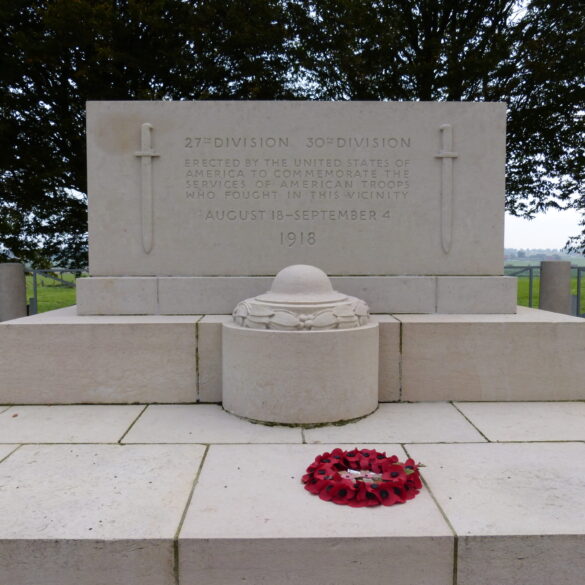Höxter, DE
On the way home from Sean’s birthday weekend trip, we made a little detour to visit Germany’s newest UNESCO World Heritage site.
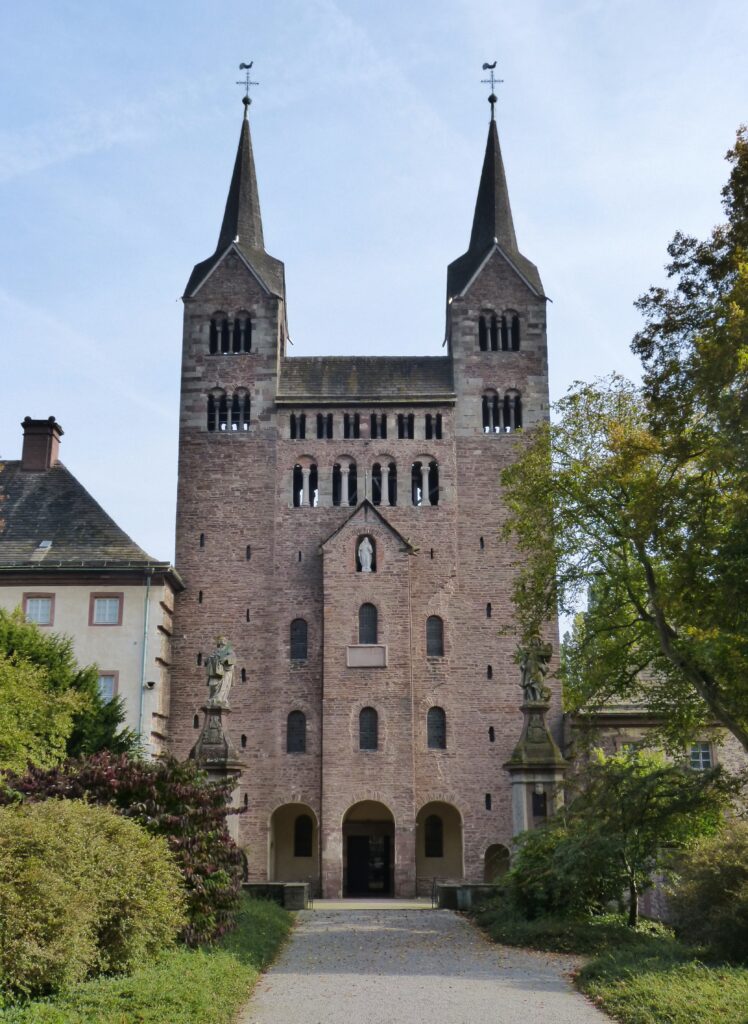
The full name of it is Carolingian Westwork and Civitas Corvey, located near the town of Höxter.
It was originally a monastery complex built in the 9th century. Only part of it remains today.
The photo above shows the westwork from the monastery church, the only preserved medieval building from the complex.
A little information about the name of this site: A westwork is a west-facing entrance of a Carolingian church. Carolingian refers to the Carolingian Renaissance period during the 8th and 9th centuries. The name of the period comes from the Carolingian (“descendant of Charles”) noble family. Civitas is a Latin word meaning city; the monastery was a city of God. Corvey derives from Corbie, a town in France where the monastery’s parent abbey was located.
You can walk around the grounds of the complex for free. There is also a restaurant on-site, located just inside the gates, that is open to the public. The restaurant used to be the coach house for horse-drawn carriages.
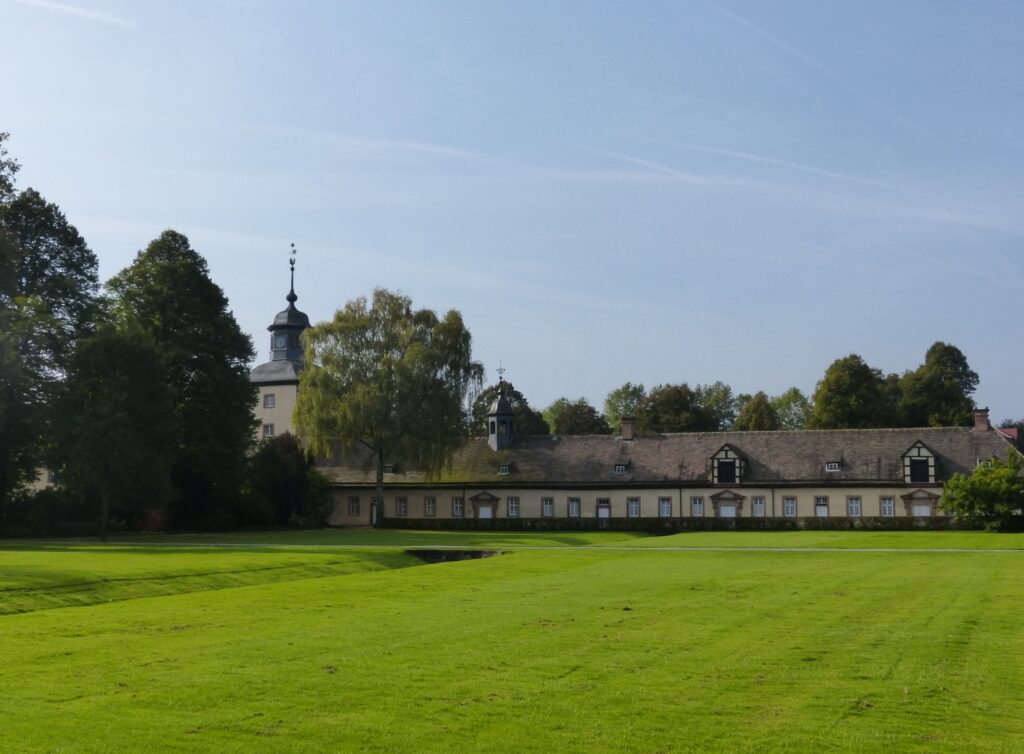
However, if you want to go into the westwork, the church or the museum there is an entrance fee. On top of that there is an extra fee if you want to take photos.
Once inside, you can climb the stairs to go to the main floor of the westwork.
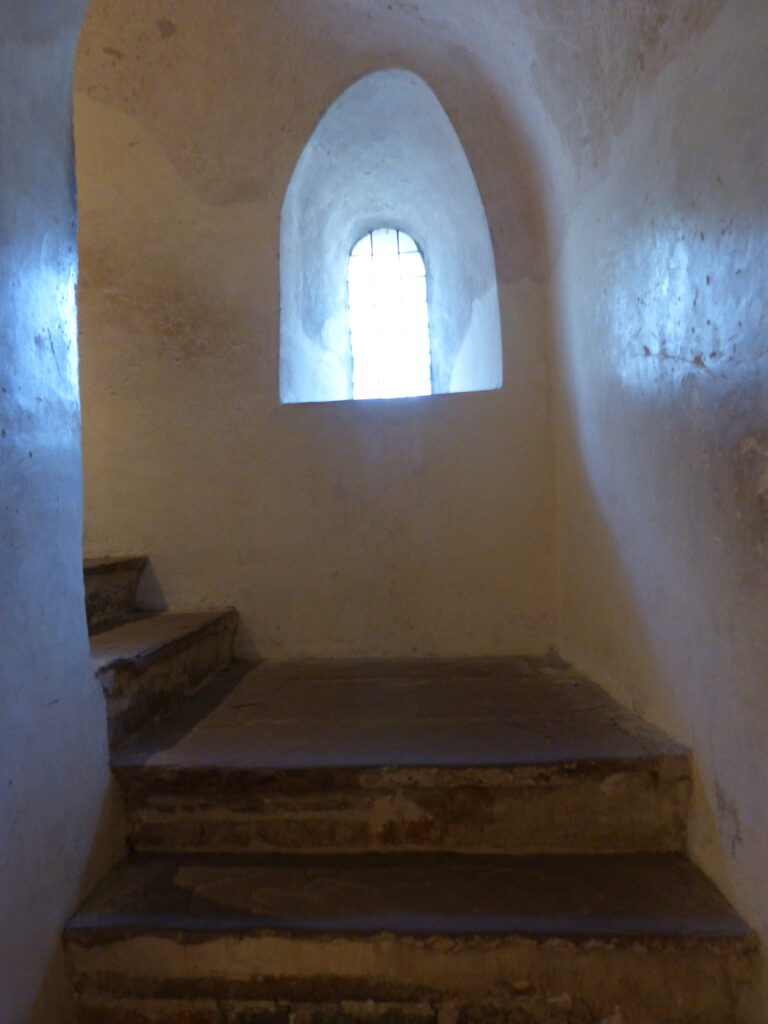
There used to be a John the Baptist altar on the main floor, so the area is also called the St. John’s choir.
The openings that you see here near the ceiling are called galleries and they were reconstructed in 1959.
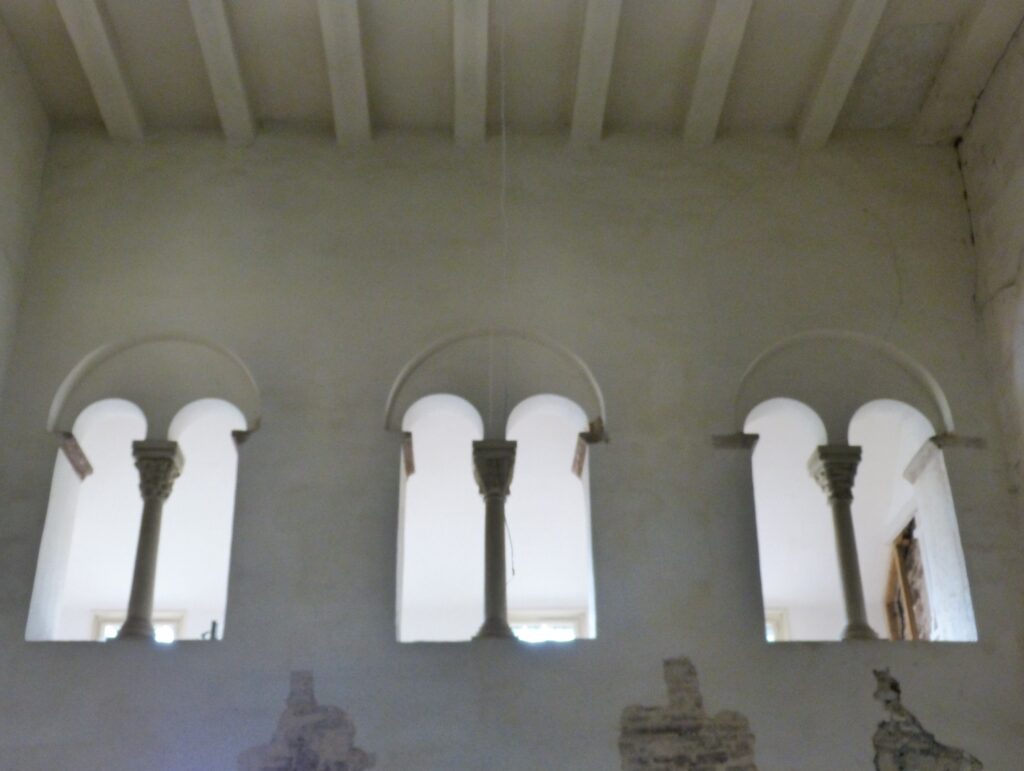
They had been walled up and replaced by windows during a previous period of alteration. The columns you see were also reconstructed.
Traces of wall painting are still visible in the St. John’s choir.
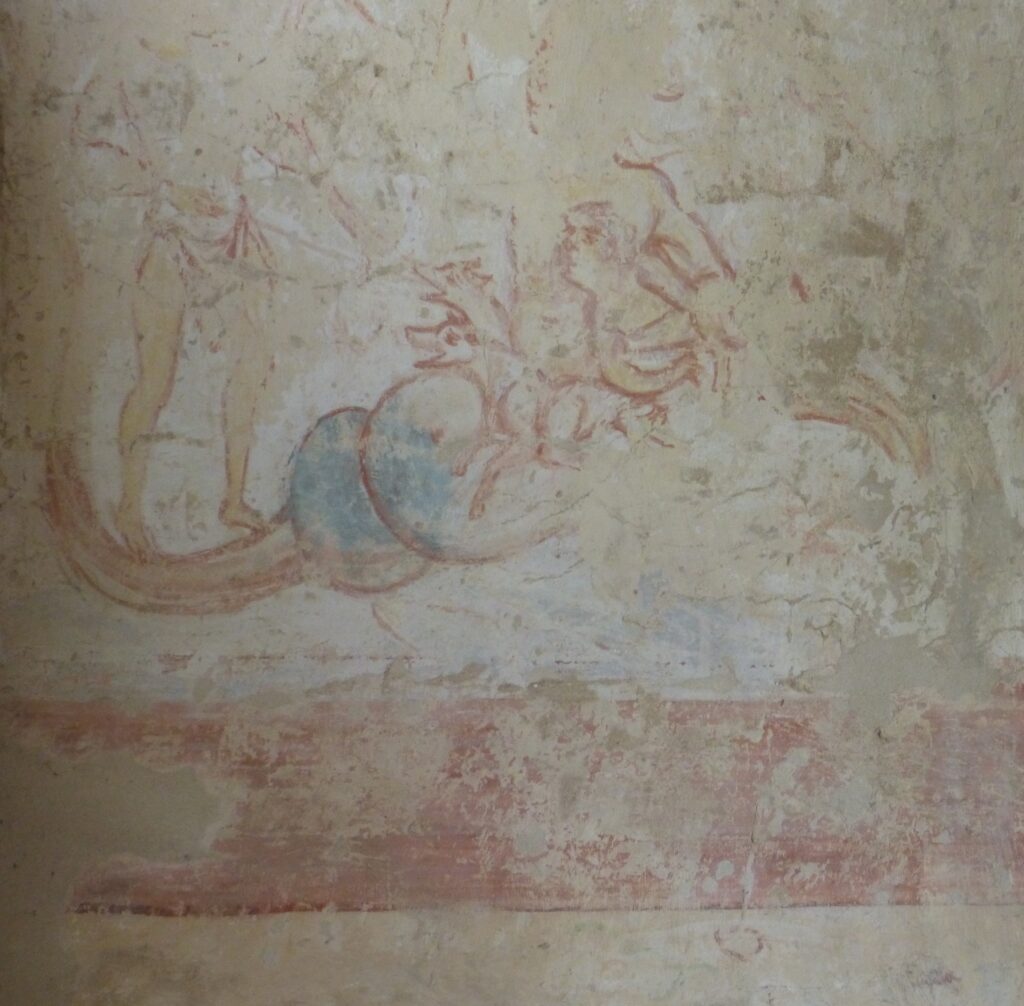
That depicts Odysseus fighting Scylla. According to the myth, Scylla’s waist was ringed by several dog heads and you can see those in the painting. They can also be seen at the Kato Paphos Archeological Site in our Cyprus blog.
Apparently the reason that scene was painted in a church is that Odysseus represents Christianity or good and Scylla represents evil.
German kings and emperors stayed at the monastery during their travels and the westwork was most likely a church for their use.
Back down the stairs is the monastery church.

After the monastery complex was damaged during the Thirty Years’ War from 1618 to 1648, it was rebuilt in the baroque style over a four-year period starting in 1667.
The red and gold colors in the church were gorgeous.
The stunning church organ from 1681 and the four angels supporting it from underneath were beautiful.
The side chapels were also gorgeous.
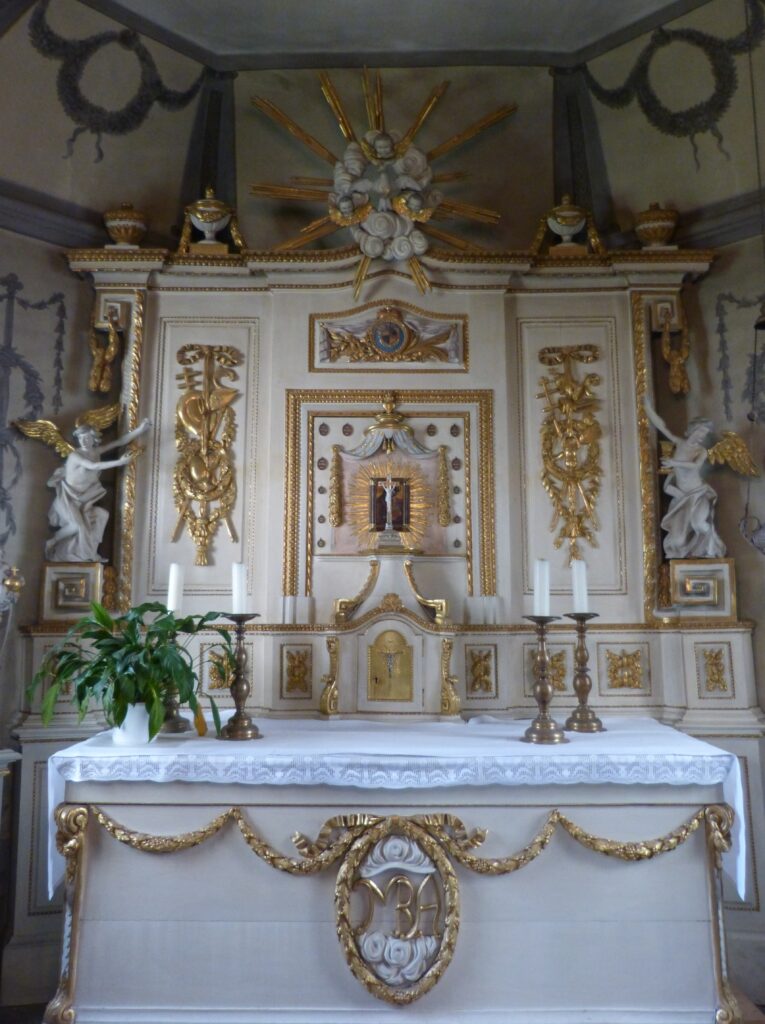
As were the side altars.
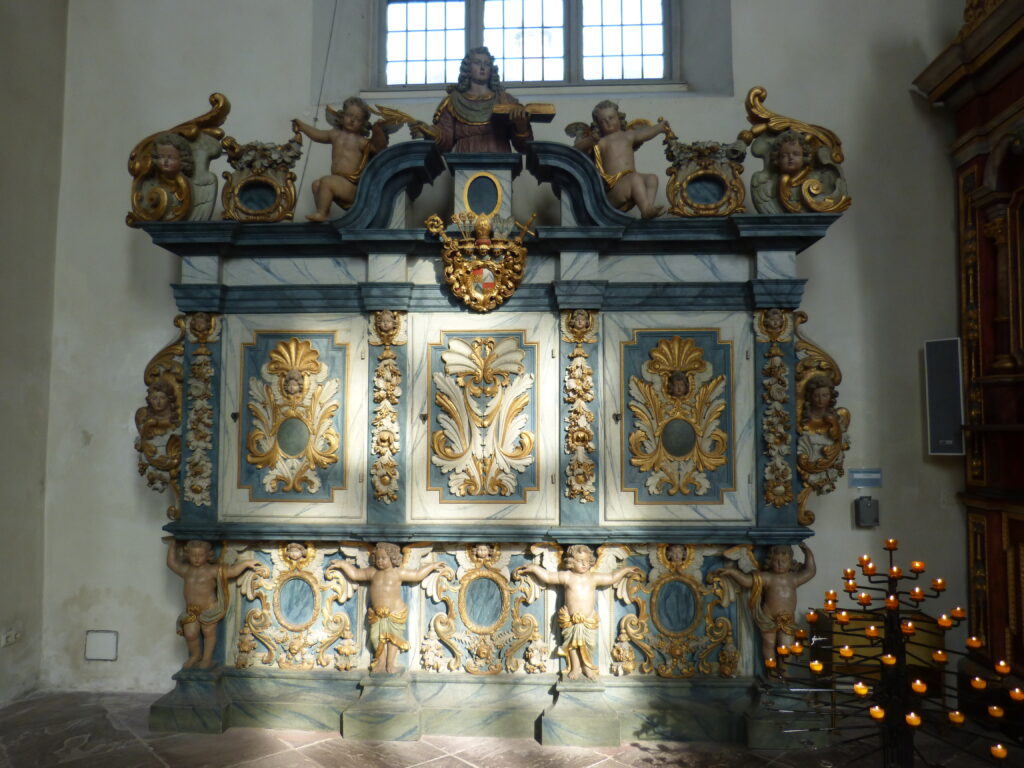
The monastery has relics of two saints, Saint Stephen and Saint Vitus, who both were named patron saints of the complex.
There is a (colorful) monument to Saint Vitus in the baroque church.
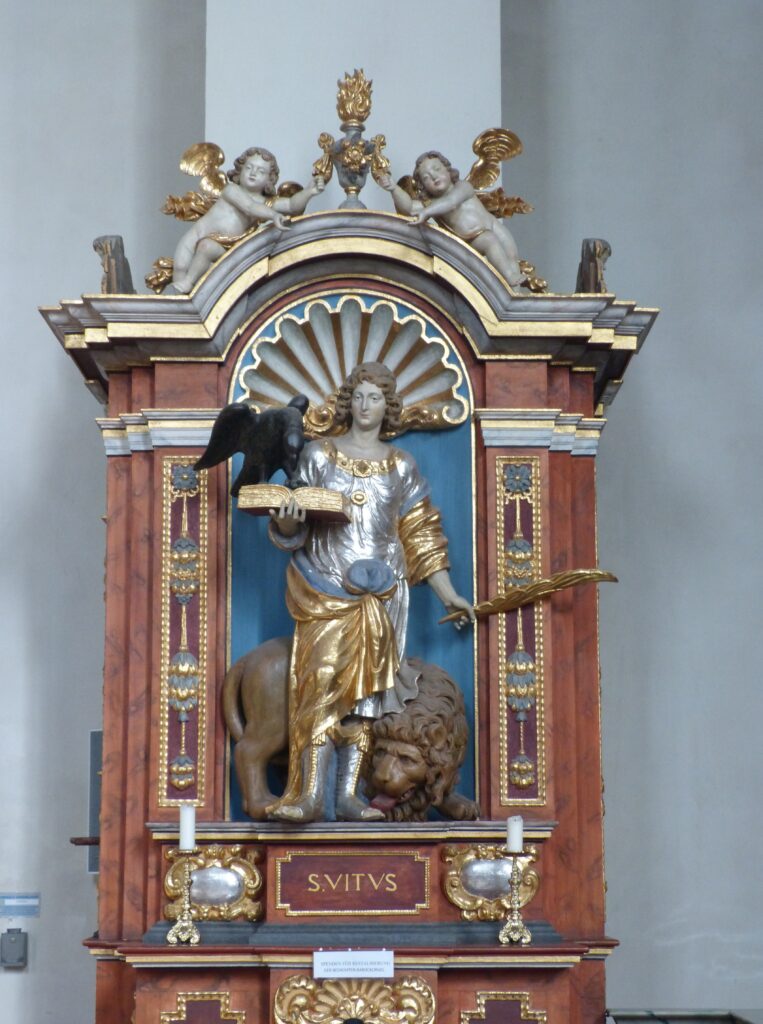
Have you ever heard of the disease referred to as Saint Vitus’ Dance? It’s formally called Sydenham’s chorea and one of the symptoms is jerky movements of the hands, feet and face.
The term Saint Vitus’ Dance comes from the fact that Saint Vitus is the patron saint of dancers. On June 15th, his feast day, people would dance in front of his statue.
Oddly, Saint Vitus is also supposed to protect against oversleeping and being in a deep sleep seems to me the complete opposite of dancing.
Exiting the church, you can walk out to the back of the complex to see the three-sided, vaulted cloister with its restored colors.
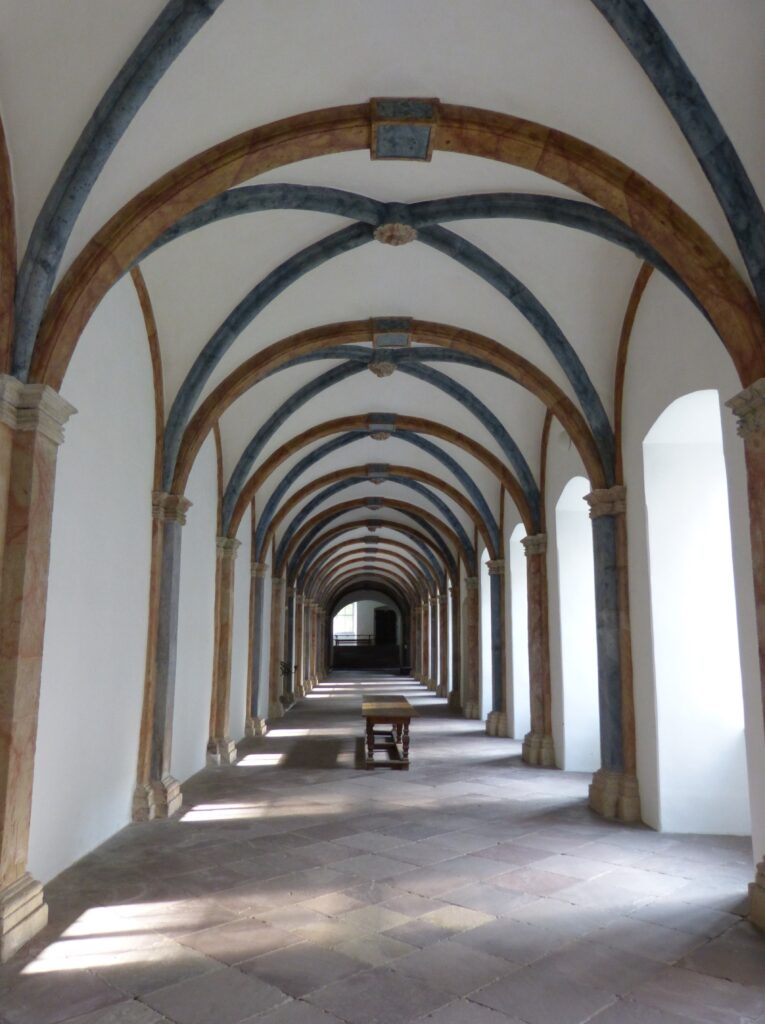
The cloister surrounds a courtyard called the Friedgarten, which translates to peaceful garden.

It was mainly a cemetery but I have to admit that it was in fact very peaceful.
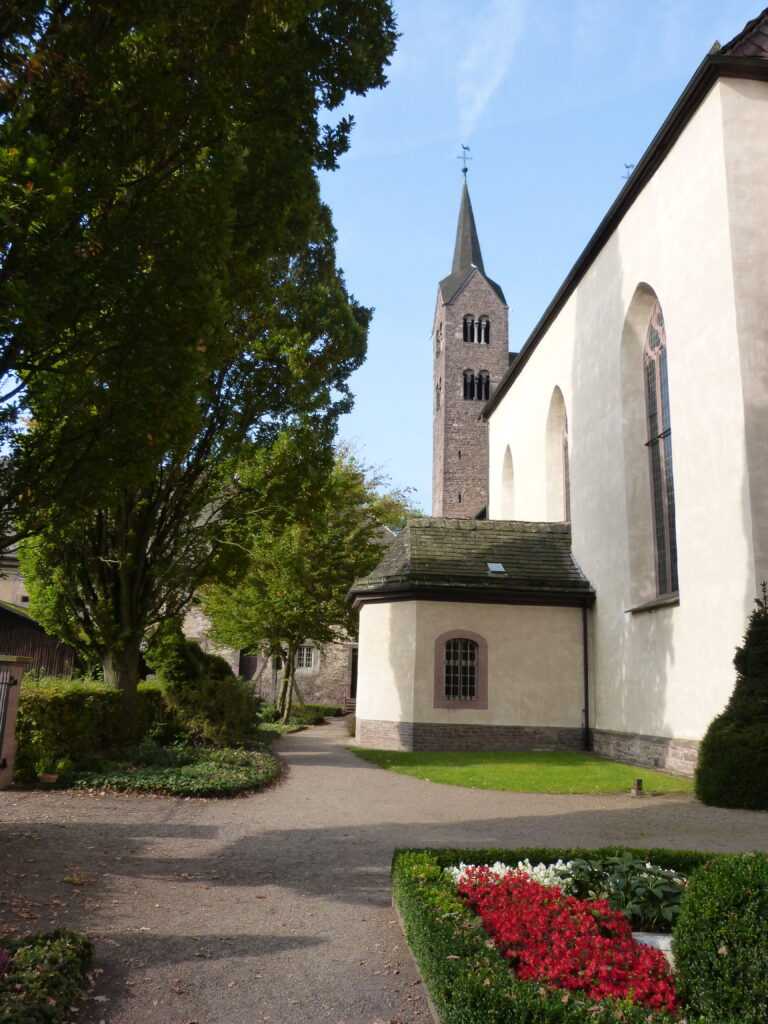
The former abbey building is now a museum. Here you get to walk through the former living and working quarters of the monastery.
For obvious reasons, this is called the Geweihgang or antler passage.
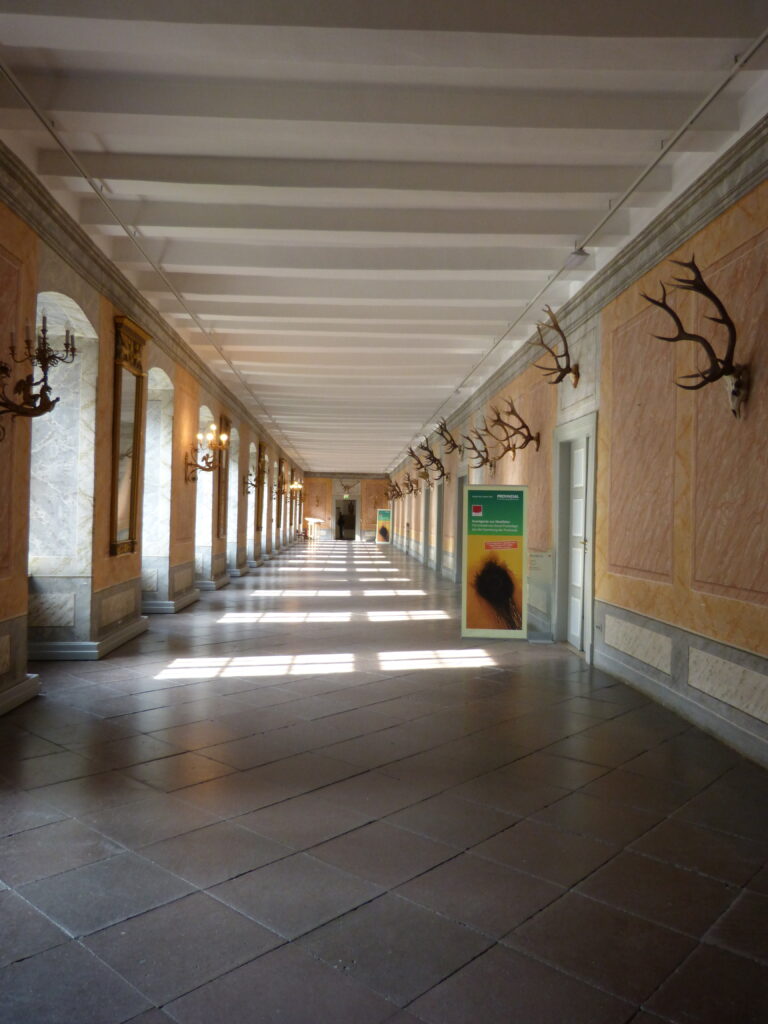
I liked what the frame was hanging on.
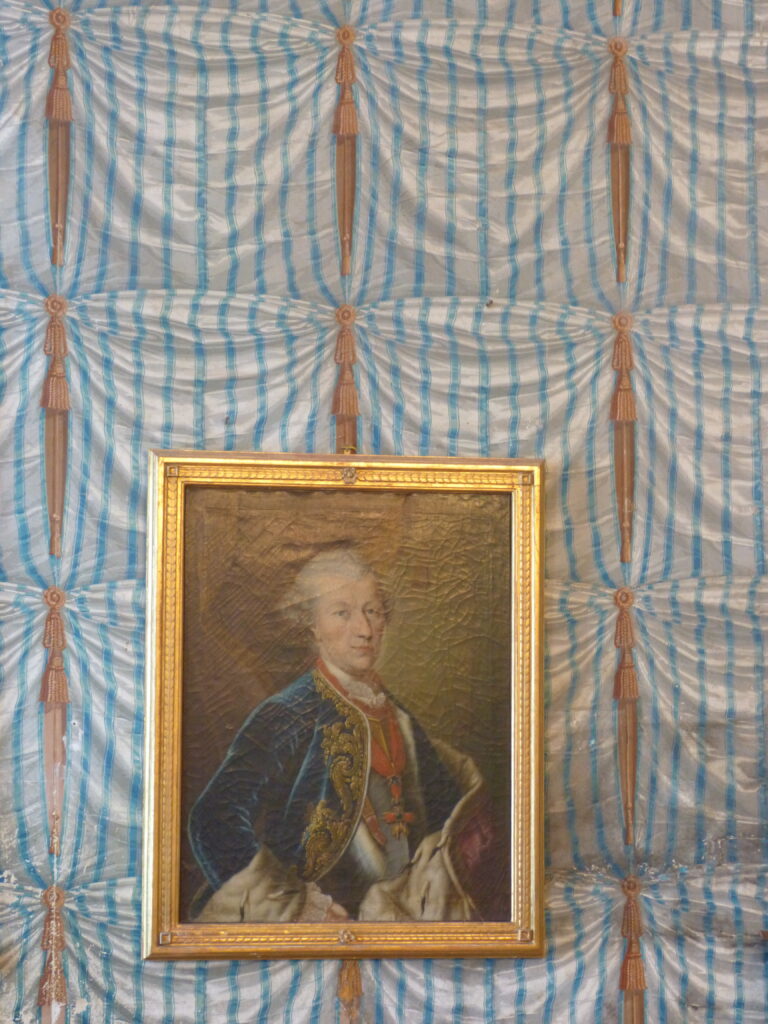
It looks like quilted fabric but it’s flat wallpaper.
The imperial hall has an elaborate ceiling painting depicting the wedding at Cana.
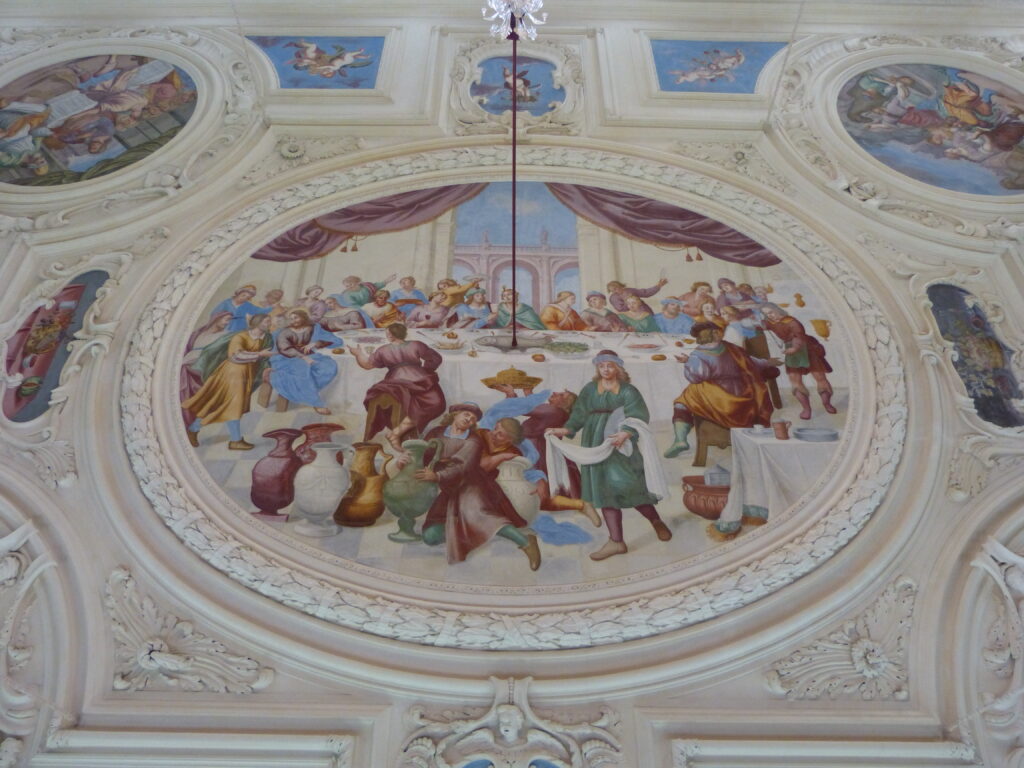
And another ceiling painting, this one in the Summer Hall, shows St. Cunigunde of Luxembourg walking on hot coals.
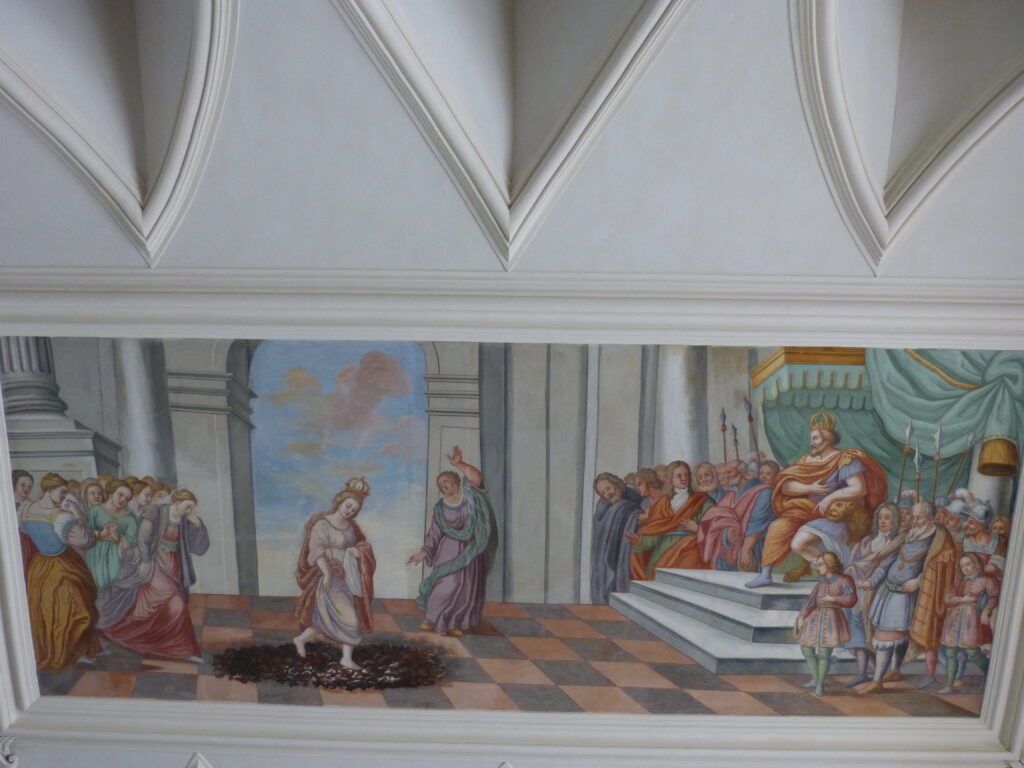
During her life, St. Cunigunde was accused of some misconduct or other and proved her innocence by walking over the coals unscathed.
One of the more impressive features of the museum is the royal library.
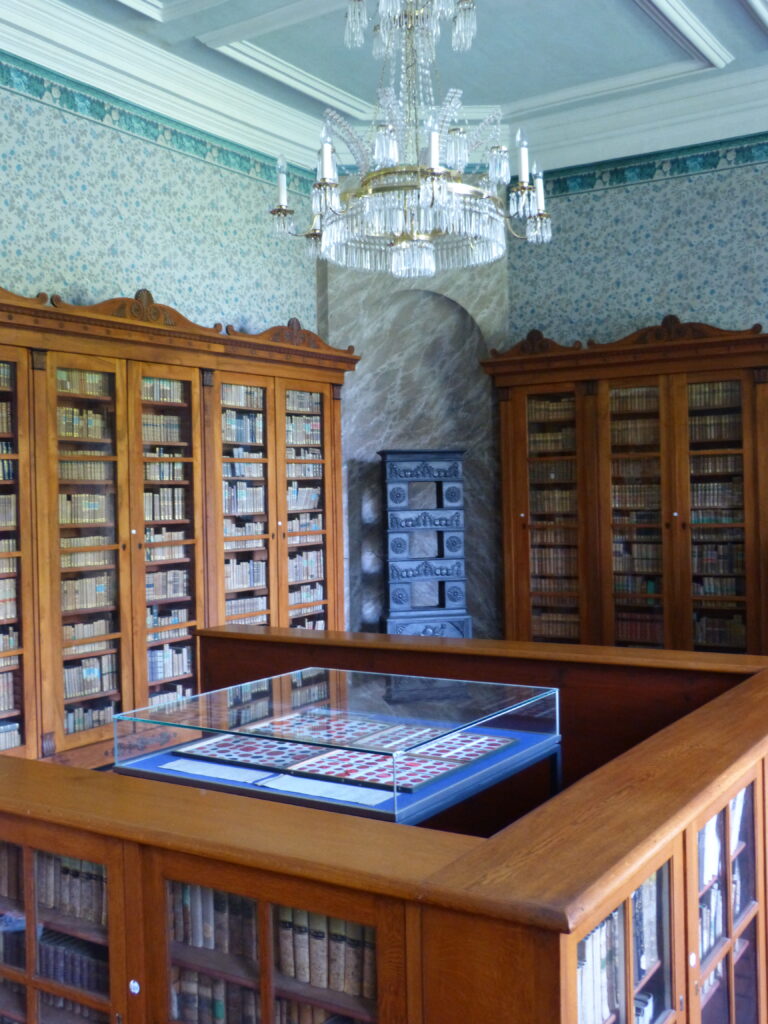
It is a collection from the 19th century that comprises over 70,000 books.
The last room we walked through before leaving the museum was the monastery kitchen.
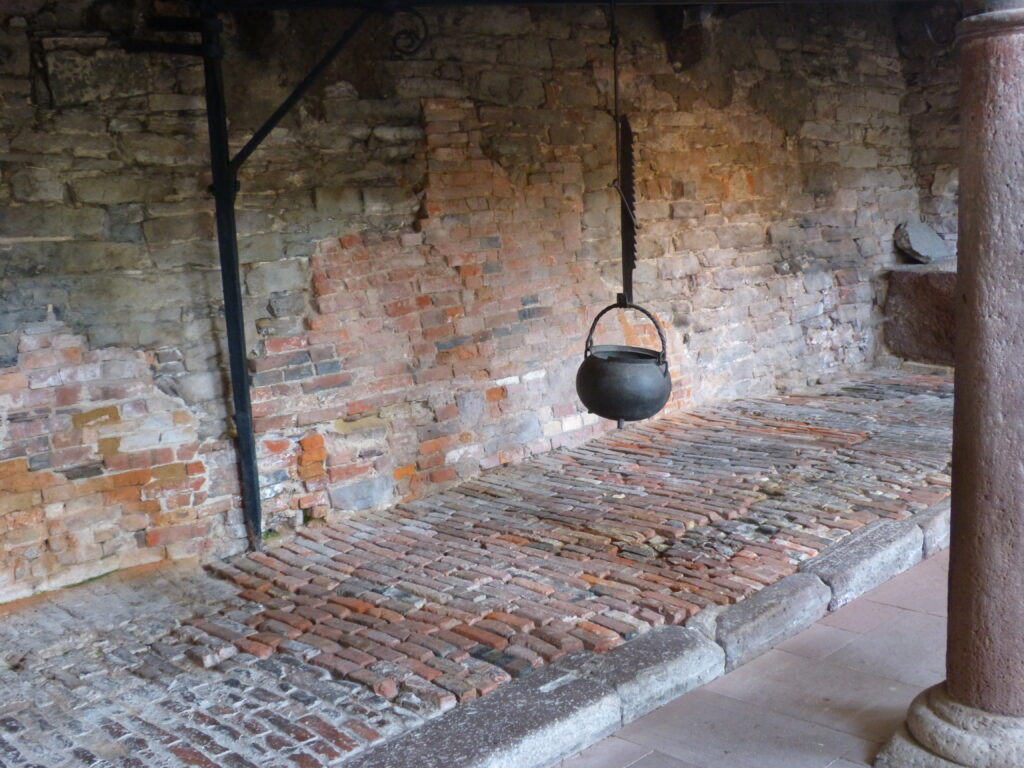
Can you imagine cooking like that for a monastery full of hungry monks?
Back outside, we strolled the grounds a little more.
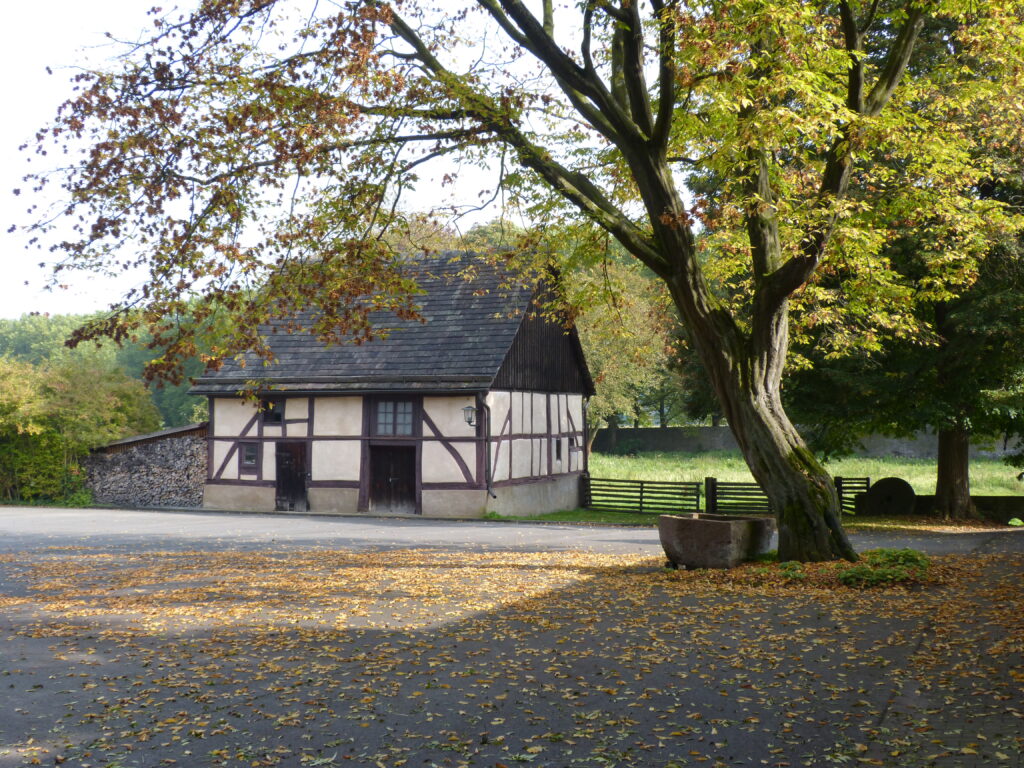
Our last stop was the on-site wine shop but we were disappointed when we arrived because they are closed on Sundays and that’s the day we were there.
The visit to this UNESCO site was a nice way to cap off Sean’s birthday weekend.


